| Japanese | English |
Last time, a piece of a piano music was analyzed by the Sound Analyzer with the integration time of 2.0 seconds. This time, the same sound will be analyzed with the high time resolution (integration time of 0.01 s and calculation step of 0.005 s). Also, it will be examined how the time history of the sound intensity is different between the anechoic room recording and the concert hall recording.
| Date: | 16 Nov. 2002 |
| Place: | Apartment |
| Personal computer: | DELL INSPIRON 5000e |
| OS: | Windows 2000 Professional |
| Software: | DSSF3 |
| Source: |
This is the running ACF measurement window of the piano motif recorded in an anechoic room (same as last time).
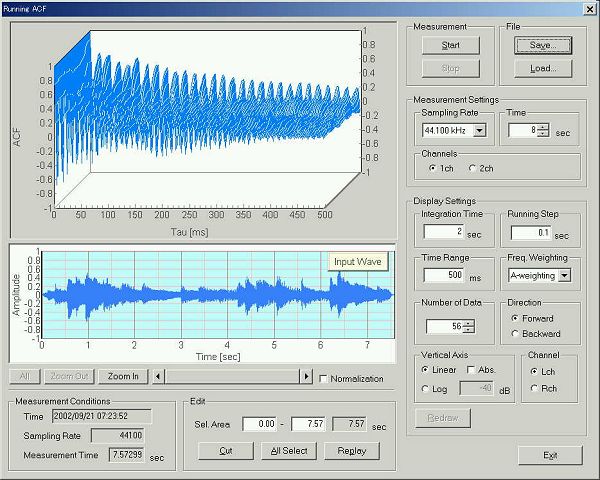
Calculation conditions in SA. Now, the integration time is set as 0.01 sec and the running step is set as 0.005 sec.
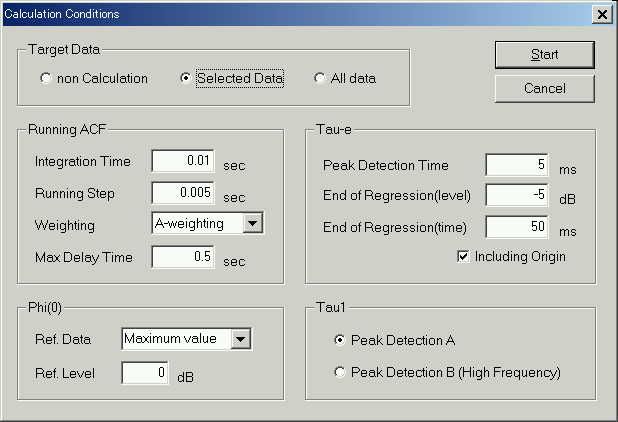
Integration time of 0.01 sec is the analysis method which raised the resolution of the time-axis. This began from Analysis of the Japanese voice 2. The graph of F(0) shows the sound level averaged in 0.01 sec.
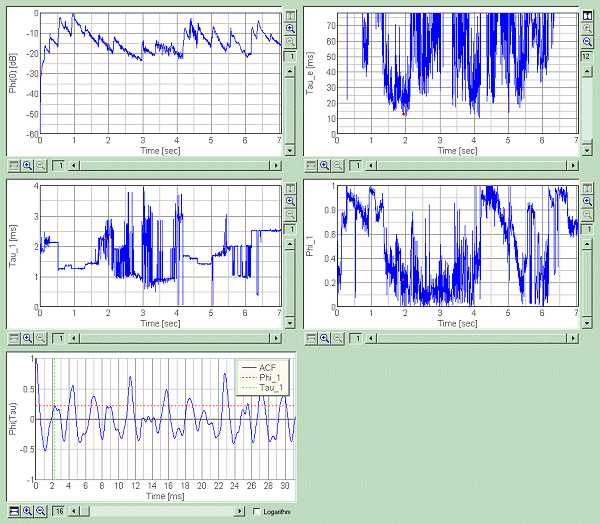
Anechoic room does not have reverberation. This is a greatly different world with the actual world. Usually, a piano makes a beautiful sound by adding a reverberation of hall to a sound of piano itself including strings and resonator. Since the sound of the piano of anechoic room does not have a reverberation of a room, a cold sound of piano is heard.
Leo Beranek explains in his book "How they sound concert and opera halls (pp 32-33)", about the decay of the instrumental sound in various acoustical conditions.
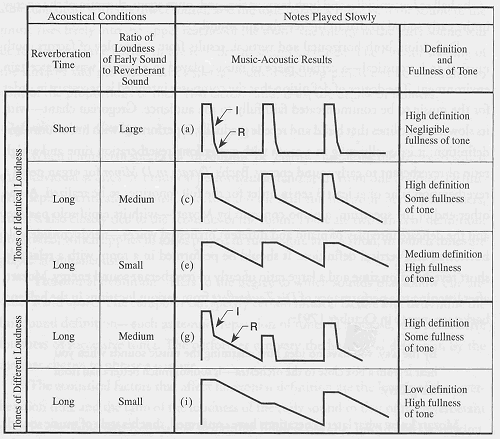
Chart illustrating the interrelations among speed of music, reverberation time, and ratio of loudness of early sound to that of reverberant sound, and the music itself (tempos are identical). I is the decay of the instrumental sound and R is the decay of the room sound.
Usually, the decay of the music consists of I (decay of the instrumental sound) and R (decay of the room sound). But for the anechoic music analyzed here, only I can be seen, because R is very small in the anechoic room.
A graph of F(0) is zoomed in around 0.2 s and 1.0 s. Attack and attenuation of a piano sound is measured.
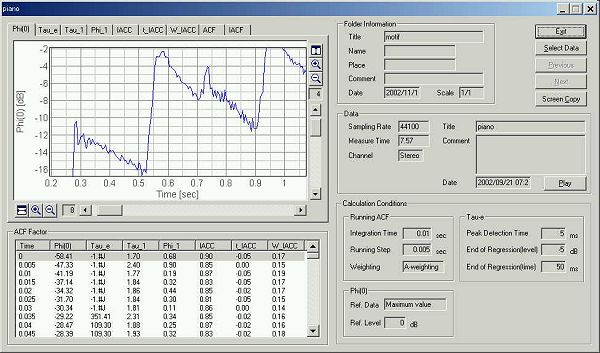
The graph was further zoomed for one sound around 0.2 s.
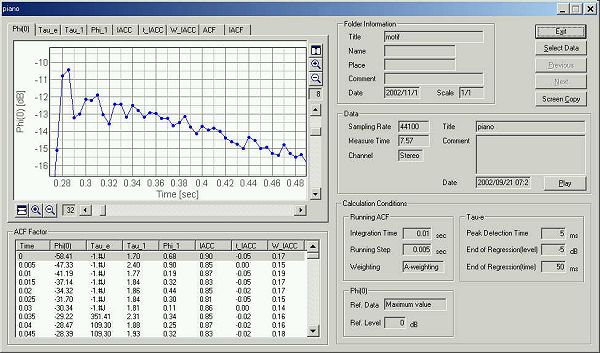
When this piano music is performed in a hall, reverberation of the room is added. It is thought that the attenuation of a sound pressure level is changed.
To compare with anechoic room recording, a piano of concert hall recording is analyzed. This is the Berlin philharmonic's recording of EDVARD GRIEG Piano Concerto in A minor, op.16.
 |
As a concert hall recording, CD of Karajan's piano concerto (Berlin
digital recording) was used.
|
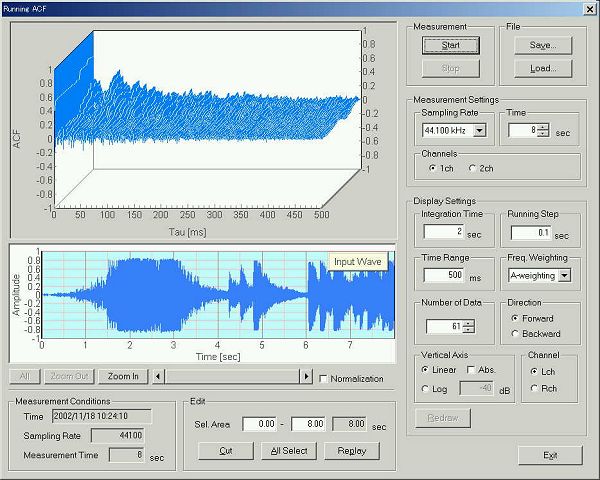
It is analyzed with the same conditions in SA.
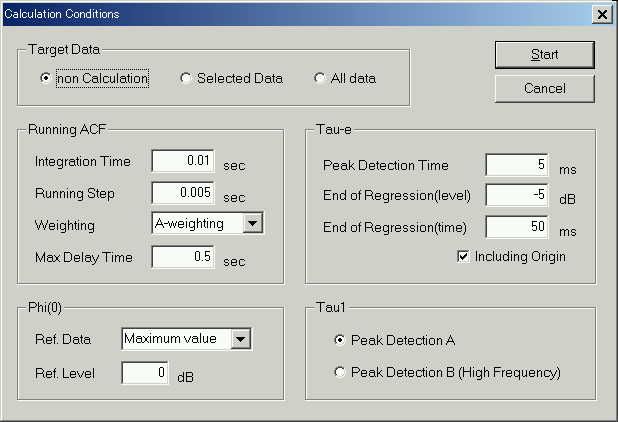
In the anechoic room recording, sound level has fallen by about 3 dB 0.005 seconds after a key is flipped. In contrast, in the Berlin recording shown in the following figure, it has fallen only by 0.1dB. This is because the room sound of the hall is added. Room sound consists of the initial reflective sound and the late reverberation sound. As in the chart above, I (decay of the instrumental sound) and R (decay of the room sound) can be clearly seen in the graph below.
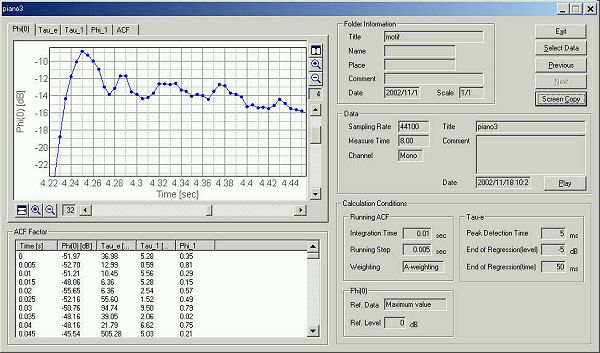
This is the analysis result of the Berlin recording. A first portion is a symphony. The piano solo has started after 4 seconds.
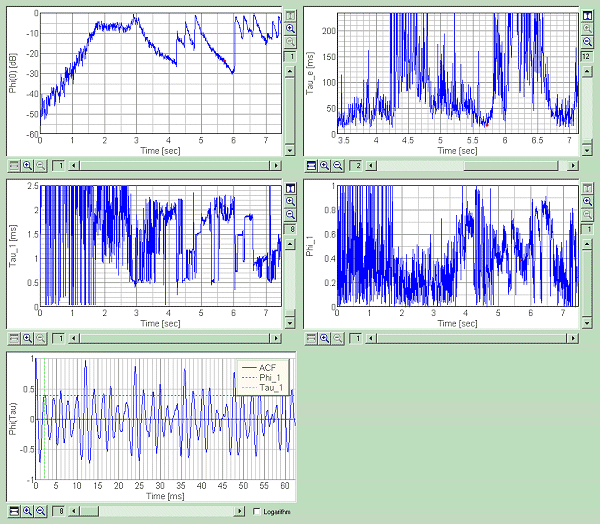
April 2003 by Masatsugu Sakurai